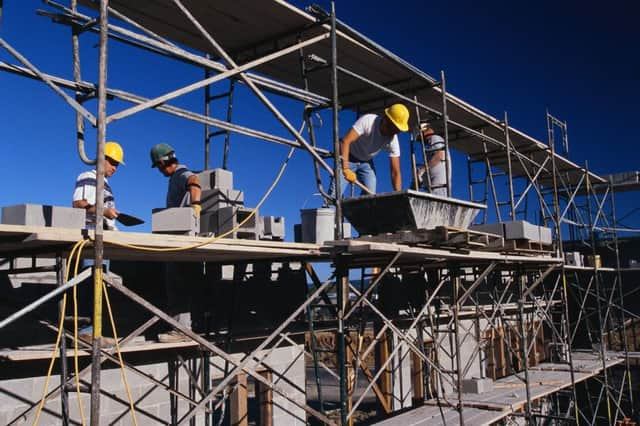Stamp duty reform will '˜disrupt' market


Giles Taylor, KPMG’s head of property and construction in the North, said property companies would be reviewing investment decisions and rushing to exchange sale contracts before the changes came into force at midnight tonight.
The changes increase stamp duty on the highest value commercial property, while cutting it lower down.
Advertisement
Hide AdAdvertisement
Hide AdThe rates currently apply to the whole transaction value, a so-called slab system. From tomorrow, the rates will apply to the portion of the transaction value which falls within each tax band.
The new rates and tax bands will be zero per cent for the portion of the transaction value up to £150,000, two per cent between £150,001 and £250,000, and five per cent above £250,000. Buyers of commercial property worth up to £1.05m will pay the same or less in stamp duty.
Stamp duty rates for leasehold rent transactions will also change, with a new two per cent stamp duty rate on leases with a net present value over £5m.
Mr Taylor said: “Despite the lobbying, the new stamp duty surcharge on purchases of ‘additional’ homes will apply to businesses, without the anticipated exemption for ‘large-scale investors’. The ‘slab’ system for commercial property transactions will be replaced with a marginal rate system with a new top rate that is 25 per cent higher than its predecessor at five per cent rather than four per cent.
Advertisement
Hide AdAdvertisement
Hide Ad“Lease duty will be ramped up. Leases with a net present value of rent over £5m will suffer a new two per cent tax rate – the previous rate was one per cent for net present value over £150,000.”
He added: “Property companies in particular will be furiously reviewing investment decisions to check that the damage caused by the changes to the initial rate of return on each investment isn’t fatal, and rushing to exchange sale contracts before midnight to escape the tax hike.”
However, David Clancy, development director at S Harrison in York, said that the changes were unlikely to have a significant impact on the market. “The 25 per cent increase in duty on larger sales will significantly increase purchaser’s costs,” he said. “The market is nothing if not flexible, and this change will no doubt be absorbed after the initial shock for those deals near completion. One of the main concerns about the new rates is that they will particularly hurt the sites with historic high costs that face marginal viability, and its these sites that tend to be in areas that are in desperate need of investment.”
Others welcomed the changes. James Yates, principal surveyor at Bilfinger GVA’s investment team in Leeds, said: “Raising the lower stamp duty threshold will provide SMEs a better opportunity to own rather than rent property.”
Advertisement
Hide AdAdvertisement
Hide AdGreg Styles, head of Colliers International’s Leeds office, said: “Osborne’s not insignificant reforms to commercial stamp duty will be an irritant to the top 10 per cent – large scale investors - but for the rest of the market they should prove a welcome relief.”
Matt Brear, of Dacres Commercial in Leeds, added: “The new changes mean that someone purchasing a property valued at £260,000 is set to save over £5,000 with the new reforms, and this could go towards a small refurbishment or even form part of a deposit for another purchase.”